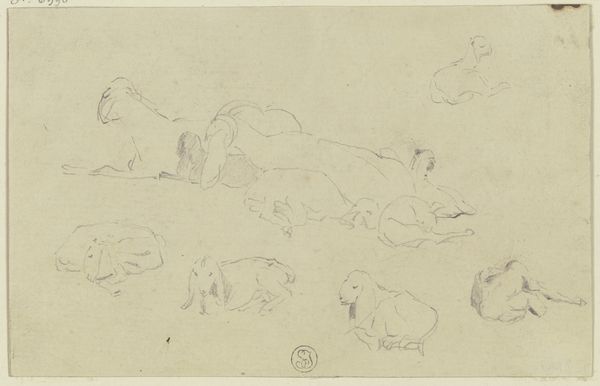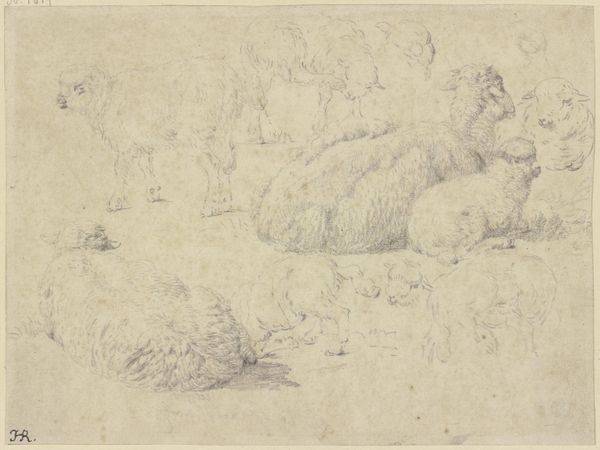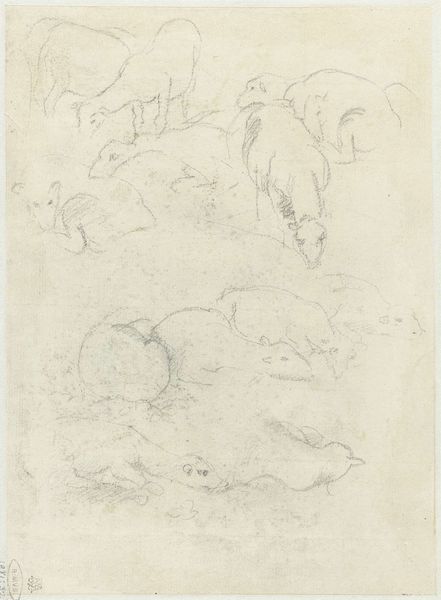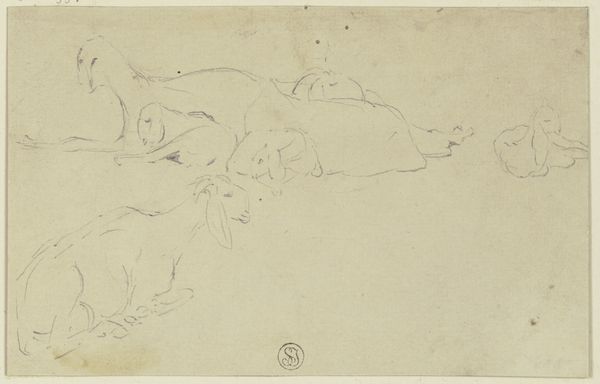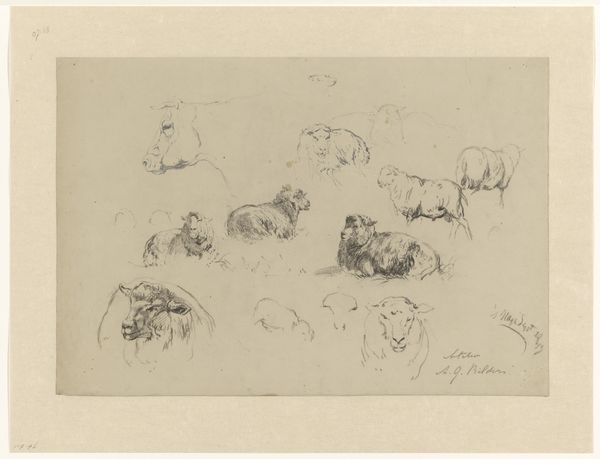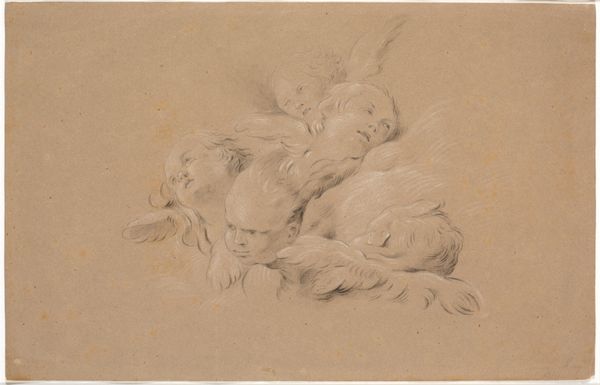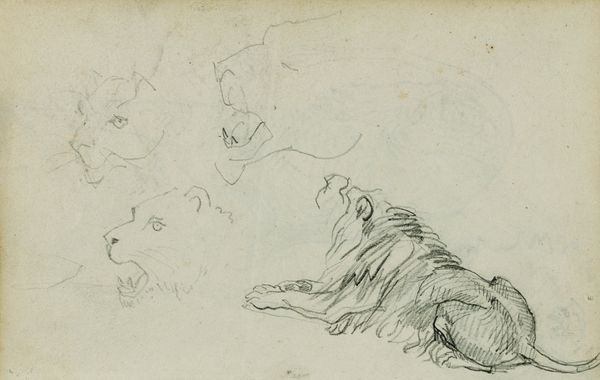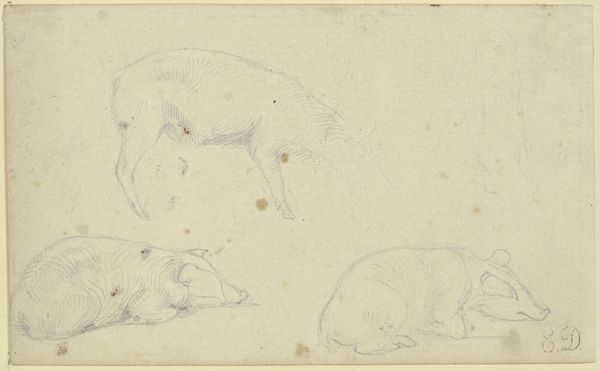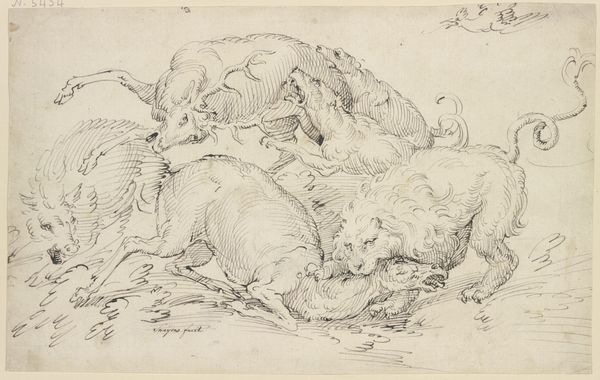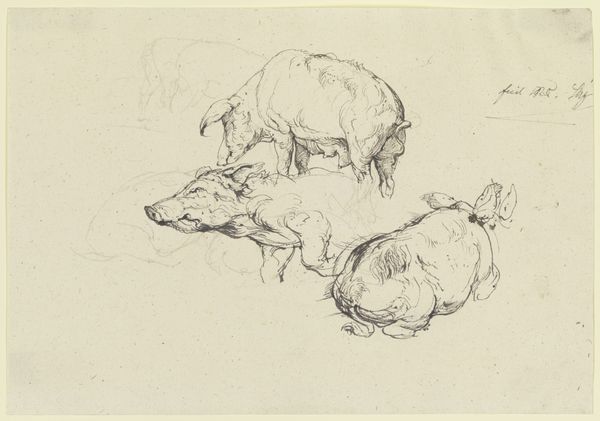
Studieblad fra Vognserup. Forskellige studier af grise. En studie af et par hestehove. En studie af et hundehovede, og studie af græs 1847
0:00
0:00
drawing, pencil
#
drawing
#
animal
#
landscape
#
pencil
#
realism
Dimensions: 295 mm (height) x 451 mm (width) (bladmaal)
Curator: Alright, let's talk about this delightful study sheet by Johan Thomas Lundbye, dating back to 1847. The piece is called "Studieblad fra Vognserup," and it’s a charming array of pencil sketches capturing different studies of pigs, a few horse hooves, a dog's head, and some grass. Editor: There's something wonderfully raw about it, isn't there? Like a fleeting glimpse into the everyday life of a farm. The piggies, especially – all huddled together, they look cozy, if pigs can be cozy! You can almost smell the mud. Curator: Exactly! Lundbye was fascinated by the Danish landscape and its creatures. As a Realist artist, he sought truth in the ordinary, the world around him, even in subjects considered unglamorous. You get a real sense of place here; this could very well have been Vognserup farm itself, where Lundbye stayed. Editor: Makes you wonder about the paper, doesn’t it? And where the pencils came from. Considering the labor conditions in 1847, I'd bet someone wasn't getting paid nearly enough to produce that drawing paper, and whoever sharpened that pencil wasn’t sharing the spoils either, just so Lundbye could capture his vision of agrarian realism. It wasn’t always pretty. Curator: That's a vital perspective. There’s such ease to the linework, that perhaps masks the more difficult reality behind its creation. But Lundbye’s skill really shines through. The observation is so keen. The way he captures the bulk of a pig, the angle of its snout, even the texture of the horse's hoof... Editor: Right. There's a tension in here, you know? Between the artistry and its social origins. We can enjoy the delicate renderings, while not forgetting where the paper comes from, and how even capturing ‘realistic’ scenes normalizes existing social structures. Curator: Perhaps that's the power of art, though—to provoke those questions, to hold up a mirror to society and ask us to look closer. Thanks for shining light on the socio-economic roots of these sketches. It’s an essential reminder to look beyond the surface and to critically consider these types of pieces from a wide angle. Editor: Indeed! Hopefully, viewers will take more than just surface charm from the drawing but leave pondering both its historical vision, and it’s own situated-ness in social history!
Comments
No comments
Be the first to comment and join the conversation on the ultimate creative platform.
